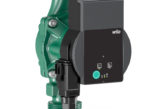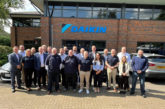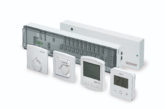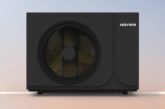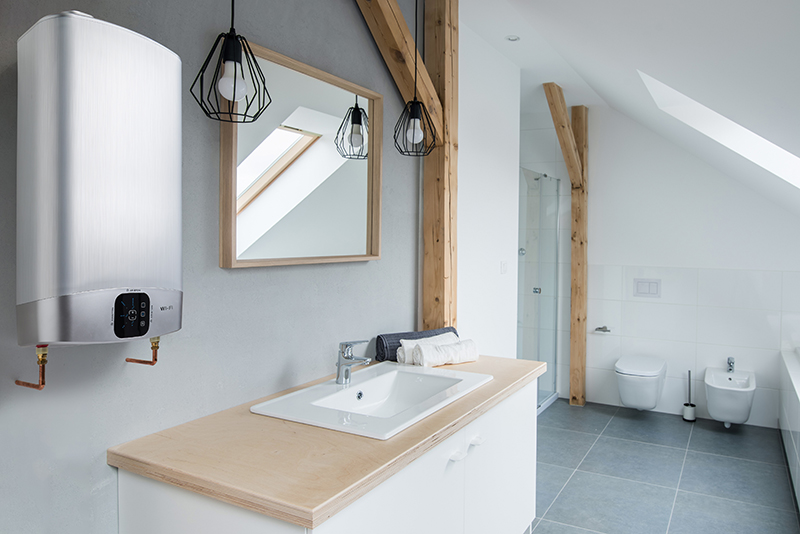
Victoria Gutierrez, Marketing Manager at Ariston, looks at the advances in electric water heater technology and identifies how the latest features make them suited to a range of applications.
For many years, the approaches to providing domestic hot water (DHW) have been somewhat traditional, primarily centred around cylinder-based systems. While these have played their part, the latest electric water heaters are now an energy efficient alternative. This has led to them being fitted in a variety of applications, including loft conversions, apartments, family homes and rental accommodation. As the products only require a connection to the electrical circuit and the cold water supply, as well as some safety devices, there is no need for extensive plumbing or complex electrical work.
Space maker
In modern homes, one of the key issues is space – or rather, the lack of it. Indeed, the average UK property measures just 92 square metres in size, while shrinking further in city centres. However, installers should be on hand to advise customers – whether it is a homeowner, landlord or property developer – that by simply converting to a tankless water heater system, they can help free up some much-needed space in their properties.
This advice is particularly pertinent for homes with a vented or unvented hot water cylinder in the airing cupboard. These stalwarts are heavy and unwieldly in terms of lifting, manoeuvring and installation, while their sheer size requires a lot of floor space. On top of this, there is only a limited amount of water available in the tank, while users have to spend time waiting for units to heat up. In addition, the majority of vented cylinders are reliant upon being fed by a cold water tank housed in the loft or attic, which takes up yet even more essential space.
Converting to a cylinder-free, wall mounted system is a way to maximise space. Any cylinders or immersion heaters can be removed and replaced by one of the latest, electric water heaters instead. These modern products eliminate the need for separate cylinders, while any storage tanks are actually built-in as part of the unit.
Meeting demand
However, as the need for space increases, so too does demand for hot water. So, there needs to be a balance between having larger capacity units which, at the same time, take up less wall space. Utilising a product with an ultra-slim design, such as Ariston’s own Velis Evo and Velis Evo Wi-Fi storage water heaters, provides the best of both worlds. These units not only benefit from twin tank technology, but also measure a mere 27cm in depth, so can be fitted inside an airing cupboard in place of a bulky 100-litre cylinder and open up a wealth of space-saving opportunities.
Of course, modern electric water heaters have more to offer than space-saving advantages alone. Advances in ‘smart’ technology have led to some electric water heaters benefitting from built-in Wi-Fi, with the Internet of Things (IoT) enabling units to be set and activated remotely via a mobile app. This precise level of controllability ensures there is always enough hot water (or a hot shower) ready when required. Such advanced functionality also allows users to monitor their energy consumption, as well as reduce their fuel bills, which is especially important in low-income homes and rental properties.
Electric water heaters already offer enhanced energy performance, as the latest products have to adhere to environmental legislation, such as ErP. This can be coupled with other sustainable functions, such as learning from the household’s daily usage, ensuring that water is only heated during the periods when demand is high. The key benefit here is that units are not left cycling during periods when a property is empty; this could be 9am to 5pm for a typical working week or, conversely, when a commercial building or office is unoccupied during evenings or weekends.
Installation guidance
Furthermore, in terms of installation, although there is no gas connection involved, fitting an unvented hot water system over 15 litres is classified as a ‘Controlled Service’ under the UK Building Regulations, so Regulation G3 applies. As a result, any large unvented unit should be fitted by a competent installer.
It is also essential that, whatever the application, the electric water heater installed complies with the necessary UK regulations, such as, for example, KIWA and ErP. After all, there are a number of overseas imports that have entered the market and, without adequate testing, their physical integrity could be compromised – while there is also a risk of the water in the units becoming contaminated. It is safer to fit high quality products that not only comply to UK standards, but also have additional features such as anti-legionella functionality, to ensure there is no microbial growth.
As electric water heaters continue to evolve, it is important to balance capacity and demand with space-saving credentials. Controllability also needs to be considered, to ensure end users benefit from high levels of comfort and energy efficiency, which are pre-requisites for any modern appliances. By embracing electric hot water heaters with the latest most advanced functionality, installers can continue to cater for all their customers’ hot water needs.


